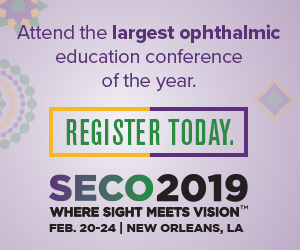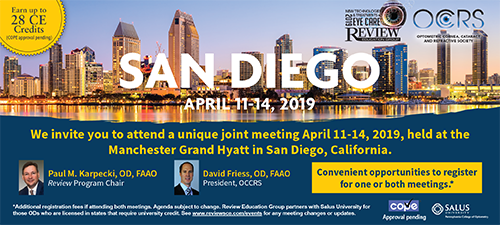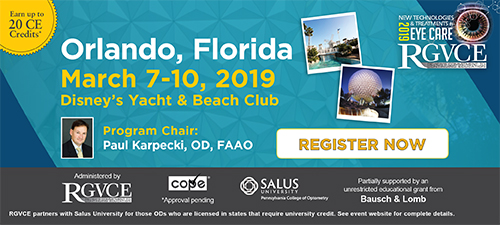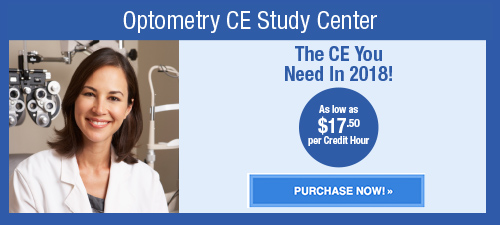
A
weekly e-journal by Art Epstein, OD, FAAO
Off the Cuff: The OIS – A Clearer View Into Our Future
With SECO less than a week away, I am looking forward to seeing how well this venerable meeting translates to New Orleans. As usual, my schedule is packed with meetings, but I’ve reserved Thursday afternoon to attend the Ophthalmic Innovation Summit. For those of us who practice at the leading edge of clinical care, the OIS@SECO is likely to be the most valuable and knowledge expanding five hours you’ll spend all year. I have yet to attend an OIS where I did not learn something new and important, and I am truly honored to serve on the OIS Advisory Board. I think the program is important for our profession. If you would like to attend, I believe there is still limited seating available. You can register here. If you have any questions, feel free to shoot me a note. I’ll see you in New Orleans.
|
|||||
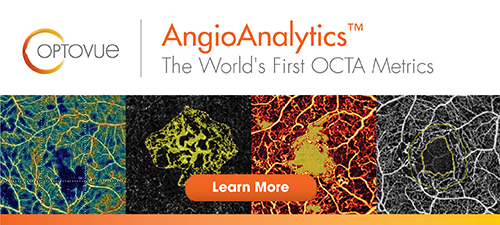 |
||
| Chronic Conjunctivitis From a Retained Contact Lens | ||||
This chart review was conducted to help clinicians diagnose and manage unilateral, recalcitrant chronic bacterial conjunctivitis secondary to a retained soft contact lens and to describe the first report of gram-negative bacteria causing this condition. Successive cases presenting with unilateral chronic conjunctivitis with positive cultures and a retained contact lens were reviewed.
Three cases were identified and described. Culturing of the retained contact lenses grew Pseudomonas aeruginosa in the first case, Achromobacter xylosoxidans in the second and Staphylococcus epidermidis in the third. All three patients were successfully treated with removal of the retained lens and targeted antibiotic eye drop therapy. The authors wrote that unilateral chronic recurrent or recalcitrant purulent papillary conjunctivitis was rare, and a retained contact lens should be suspected in patients with a history of wearing contact lenses. Careful examination with double eversion of the upper eyelid and sweeping of the fornices could recover the offending lens, they added. Although only gram-positive organisms were isolated in previous reports, the authors clarified, two of three cultures grew gram-negative organisms, highlighting the importance of broad-spectrum antibiotic usage for these cases. |
||||
SOURCE: Arshad JI, Saud A, White DE, et al. Chronic conjunctivitis from a retained contact lens. Eye Contact Lens. 2019; Feb 1. [Epub ahead of print]. |
||||
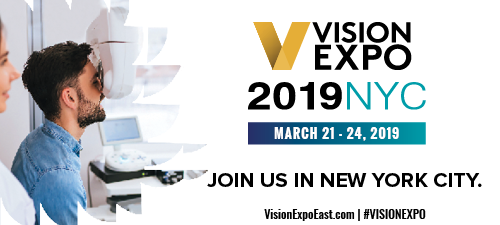 |
||
| Preoperative Estimation of Distance Between Retinal Break and Limbus with Wide-field Fundus Imaging: Potential Clinical Utility for Conventional Scleral Buckling | ||||
Accurate scleral marking of retinal breaks is essential for successful scleral buckling. This study aimed to investigate the use of wide-field fundus images obtained with an Optos device for preoperative estimation of the distance from the limbus to the retinal breaks. This is a retrospective review of 29 eyes from 26 patients with rhegmatogenous retinal detachment that received scleral buckling with anatomically successful repair and underwent wide-field fundus photography. In the pre- and postoperative fundus images, researchers measured distances from the macula to the retinal tears (TM), to the center of the vortex veins (VM), to the optic disc (DM) and to the posterior edge of the scleral buckle (BM).
(BM-VM) / DM was significantly correlated with the distance from the limbus to the posterior edge of the scleral buckle that had been determined intraoperatively. Researchers applied a regression line derived from this correlation with the value of (TM -VM) / DM in order to calculate estimated distances between retinal breaks and the limbus. The calculated distances were all within the range of distances from the limbus to the anterior and posterior edges of the scleral buckles. Researchers concluded that preoperative analysis of such images might be useful for estimating the distance from the limbus to retinal breaks, which might aid scleral marking during scleral buckling surgery. |
||||
SOURCE: Ishikawa K, Kohno RI, Hasegawa E, et al. Preoperative estimation of distance between retinal break and limbus with wide-field fundus imaging: Potential clinical utility for conventional scleral buckling. PLoS One. 2019;14(2):e0212284. |
||||
|
|||
| Long-term Outcomes of Penetrating Keratoplasty for Corneal Complications of Herpes Zoster Ophthalmicus | ||||
This review evaluated the long-term outcomes of penetrating keratoplasty (PKP) for corneal complications of herpes zoster ophthalmicus (HZO). Investigators reviewed the medical records of 53 patients (53 eyes) who underwent PKP due to corneal complications of HZO, at the Kellogg Eye Center. The mean age of patients at the time of PKP was 68 years ± 16.4 years, with a follow-up of 4 years ± 3.8 years and quiescent period of 6.5 years ± 5.3 years from active HZO to PKP. Preoperatively, 25 (47.2%) eyes were completely anaesthetic, while 16 (30.2%) had deep corneal neovascularization in four quadrants. Comorbid ocular disease, including cataract, glaucoma and macular disease, was present in 25 (47.2%) eyes. Twenty patients (37.8%) received acyclovir for the entire postoperative period. There were no recurrences of zoster keratitis in any eye. The most common complications were difficulty healing the ocular surface (12/53, 22.6%) and glaucoma (14/53, 26.4%). Thirty percent of the eyes required one or more additional postoperative procedures, most commonly tarsorrhaphy (10/53, 18.9%) and amniotic membrane graft (6/53, 11.3%). At one, two to four and ≥five years, 94%, 82% and 70% grafts remained clear, respectively. Visual acuity improved at one year postoperatively, but this improvement was not sustained. There was no significant benefit of long-term acyclovir on visual acuity or graft survival. Investigators found that, even in eyes with significant preoperative risk factors, PKP for the corneal complications of HZO could achieve favorable tectonic and visual results. Although most grafts remained clear, long-term visual potential might be limited by comorbid ocular diseases. Prophylactic postoperative oral acyclovir didn’t improve outcomes. |
||||
SOURCE: Tanaka TS, Hood CT, Kriegel MF, et al. Long-term outcomes of penetrating keratoplasty for corneal complications of herpes zoster ophthalmicus. Br J Ophthalmol. 2019; Feb 7. [Epub ahead of print]. |
||||
| News & Notes | |||||||||||||||
B+L Gets 510(k) Nod for Use of Tangible Hydra-PEG Custom Contact Lens Coating Technology
|
|||||||||||||||
| Topcon Healthcare Solutions & Oculo Form Global Partnership Topcon Healthcare Solutions and Oculo announced a new partnership. The companies will integrate Topcon Harmony, an open-source, web-based data management application for connecting ophthalmic imaging devices regardless of manufacturer, with Oculo, a cloud-based network designed to share clinical information, referrals and other clinical correspondence. Read more. |
|||||||||||||||
| Registration Open for NORA Clinical Skills Pre-Conference & Annual General Conference Registration is now open for the 2019 Neuro-Optometric Rehabilitation Association, International Clinical Skills Pre-Conference (September 19-20) and 28th annual General Conference (September 21-22) at the Embassy Suites by Hilton Scottsdale Resorts, Scottsdale, Ariz. The NORA conference will feature key opinion leaders from optometry and other specialties, offering a combination of hands-on and lecture style continuing education presentations for professionals who provide rehabilitative services to individuals who have suffered a traumatic brain injury. Read more. |
|||||||||||||||
| Avedro Rings Nasdaq Stock Market Closing Bell in Celebration of IPO Avedro (Nasdaq: AVDR), a commercial-stage ophthalmic medical technology company, celebrated its initial public offering (IPO) by ringing the closing bell of the Nasdaq Stock Market in Times Square in New York City on Thursday. Reza Zadno, PhD, president and CEO, was given the honor of ringing the bell. |
|||||||||||||||
|
|||||||||||||||
|
|||||||||||||||
|
Optometric Physician™ (OP) newsletter is owned and published by Dr. Arthur Epstein. It is distributed by the Review Group, a Division of Jobson Medical Information LLC (JMI), 11 Campus Boulevard, Newtown Square, PA 19073. HOW TO ADVERTISE |


